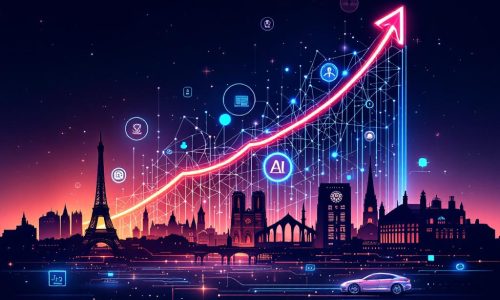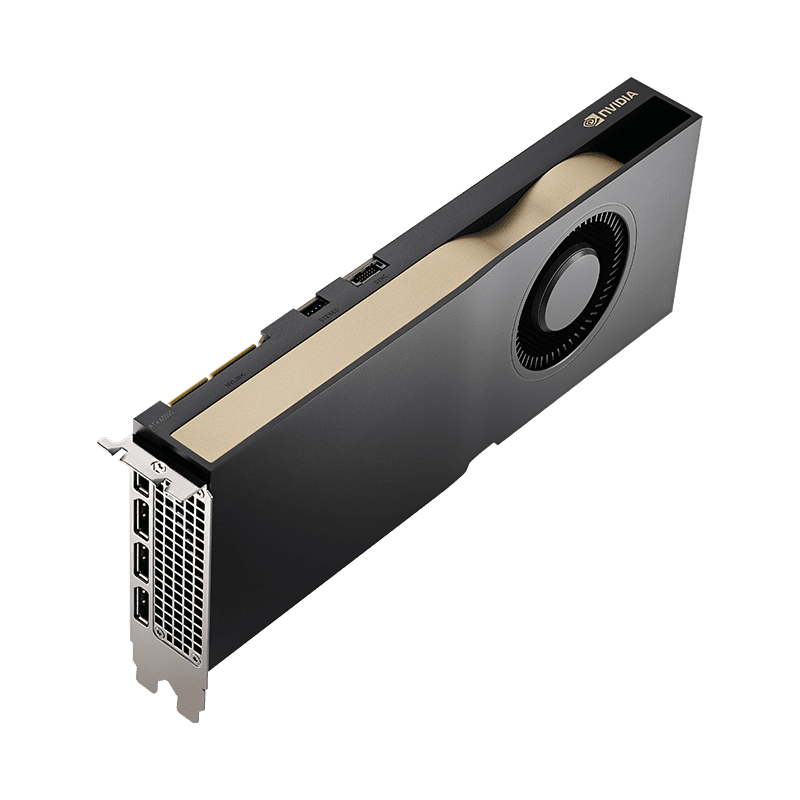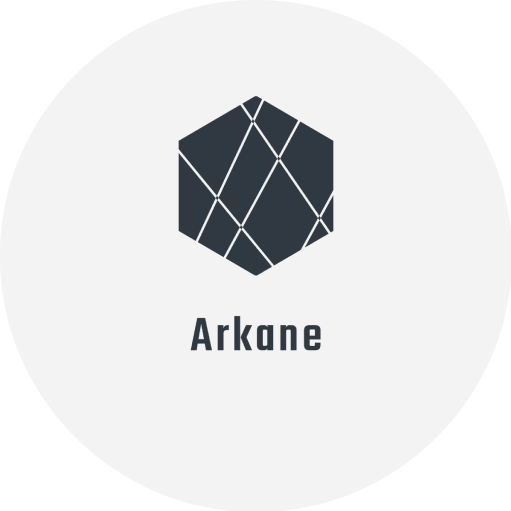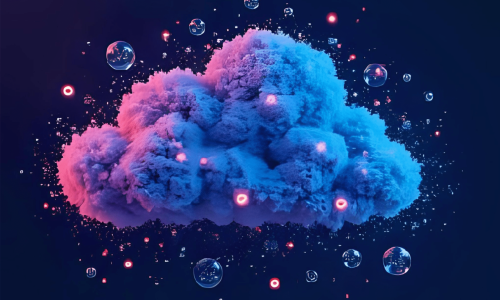
Media and Entertainment Industry Applications of RTX A5000

Introduction
The NVIDIA RTX A5000, a technological marvel in the realm of graphics processing, heralds a new era for the media and entertainment industry. This powerful GPU is not just a tool; it’s a catalyst for innovation, reshaping the entire landscape of visual creation and storytelling. As the industry grapples with evolving economic models and the constant quest for engaging content, the RTX A5000 emerges as a pivotal asset, offering solutions to challenges that were previously insurmountable.
The significance of the RTX A5000 transcends traditional boundaries of graphics rendering. It’s a harbinger of change, redefining what’s possible in media production. This transformation is not merely about achieving higher resolutions or faster rendering times; it’s a fundamental shift in the creative process. The RTX A5000 enables artists to push the limits of their imagination, turning abstract ideas into tangible realities with an unprecedented level of detail and realism.
In the realm of previsualization, the RTX A5000 has revolutionized traditional storyboarding. Where once rough sketches sufficed, now creators can employ tools like SketchUp to craft detailed, three-dimensional scenes, offering stakeholders a more immersive preview of the envisioned narrative. This leap forward is not just about aesthetics; it’s about providing a richer, more nuanced canvas for storytelling.
Character animation, a cornerstone of media production, has been profoundly transformed by the RTX A5000. The GPU’s prowess allows for the manipulation of complex geometries and textures, blurring the line between digital art and real-world imagery. What used to be an animator’s interpretation of physical phenomena can now be accurately simulated, thanks to the RTX A5000’s ability to handle real-time physics. This capability doesn’t just enhance visual fidelity; it injects a dose of authenticity into the animation, making it more believable and engaging for the audience.
Another domain where the RTX A5000 shines is in rendering and lighting. With its advanced GPU acceleration, technologies like ray tracing and global illumination are leveraged to create scenes with lighting and shadows that mimic real-life conditions. This advancement is particularly crucial for indoor scenes, where accurate lighting is key to establishing mood and atmosphere. The RTX A5000 enables creators to achieve a level of lighting precision that was once the sole preserve of high-budget productions.
In virtual production, the RTX A5000 stands out for its high-performance, photorealistic rendering capabilities. It supports complex productions that require synchronization across multiple graphics cards, ensuring a seamless and coherent visual output. This functionality is critical in creating large-scale virtual environments, such as LED Vaults, where every detail must align perfectly. The RTX A5000 not only simplifies the technical aspects of such productions but also introduces substantial economic benefits. By minimizing the need for on-location shooting, it offers a more sustainable and cost-effective model for film production.
The RTX A5000 has also changed the way actors interact with their environment. No longer confined to green screens, actors can now engage with more realistic, interactive backgrounds. This advancement enhances the authenticity of performances, as actors respond to elements that are visually present in the scene. Such an environment fosters a more natural and spontaneous acting style, capturing nuances that were previously achievable only through post-production visual effects.
In summary, the RTX A5000 is not just a piece of hardware; it’s a gateway to new creative horizons. It empowers artists, animators, and filmmakers to explore uncharted territories of visual storytelling, transforming the media and entertainment industry in profound and lasting ways.
Revolutionizing Previsualization
The evolution of previsualization, a critical phase in media production, has been profoundly influenced by the capabilities of the NVIDIA RTX A5000. Traditionally, previsualization was synonymous with storyboarding—a process of sketching out scenes to convey a story’s visual flow. However, the advent of the RTX A5000 has ushered in a new era where this process is no longer confined to the realm of 2D sketches. Now, creators can employ tools like SketchUp to rapidly develop a variety of detailed scenarios in three-dimensional space, presenting them to directors, producers, and other stakeholders. This 3D approach allows for a more nuanced and developed form of previsualization, enabling a clearer understanding of the intended visual narrative.
The leap in character animation facilitated by the RTX A5000 marks another significant milestone. This powerful GPU enables the creation of characters with complex geometries and textures, bridging the gap between sophisticated animation and real-world imagery. In the past, character animation relied heavily on the animator’s interpretation of how objects should look and behave under various physical conditions. With the RTX A5000, this process transforms into one where real-time simulations of underlying physics are used, allowing for physically accurate animations that resonate more authentically with audiences. For instance, animating a projectile expelled under altered gravity conditions becomes a task rooted in realistic physics rather than guesswork.
Furthermore, the RTX A5000’s GPU acceleration capabilities have redefined the boundaries of speed and efficiency in rendering and visualization. Leveraging technologies like ray tracing and global illumination, the RTX A5000 achieves a level of rendering performance unattainable by any CPU. This is particularly beneficial for scenes requiring highly accurate lighting, such as indoor environments. The RTX A5000, with its support for path traced rendering through NVIDIA SDKs, SPIs, APIs, and development frameworks, ensures that lighting and shadows in these scenes are as lifelike as possible, enhancing the overall visual quality and immersiveness of the production.
In summary, the NVIDIA RTX A5000 has revolutionized previsualization and character animation in media production. It has transformed the way stories are visualized and characters are brought to life, enabling a more immersive, detailed, and physically accurate portrayal of creative visions.
Advancements in Rendering and Visualization
The NVIDIA RTX A5000 has marked a significant advance in rendering and visualization within the media and entertainment industry. This leap forward is primarily driven by the GPU’s extraordinary acceleration capabilities, which exceed the capacities of any traditional CPU. One of the key technologies enabled by the RTX A5000 is ray tracing, a rendering technique that simulates the physical behavior of light to produce highly realistic images. This technology, coupled with global illumination, allows for the creation of scenes with incredibly lifelike lighting and shadows, essential for setting the right tone and mood in visual storytelling.
The application of these technologies is particularly transformative in indoor scenes. With the RTX A5000, creators can utilize path traced rendering, a method that calculates the path of light as it travels through a scene. This method results in more accurate and natural lighting, particularly in environments where light interacts complexly with the surroundings, like in indoor settings. The RTX A5000’s capability to handle this sophisticated rendering process enables a level of visual fidelity and immersion previously unattainable, making the creative process more fluid, interactive, and iterative.
Another aspect where the RTX A5000 excels is in the accurate depiction of materials and textures in virtual environments. This is particularly noticeable in costuming, where the subtleties and intricacies of different kinds of fabrics, their textures, and how they interact with light and movement, can be rendered with complete physical accuracy. Whether it’s the sheen of a silk gown, the ruggedness of medieval armor, or the glitter of jewelry, the RTX A5000 ensures that these materials are depicted with a realism that was once only achievable in high-budget productions. This attention to detail enhances the overall believability of the scene and enriches the viewer’s experience.
In essence, the RTX A5000 has not just improved the efficiency of rendering processes; it has opened up new realms of creative possibilities. By enabling the accurate depiction of light and materials, it allows creators to bring their artistic visions to life with an unprecedented level of detail and realism.
The Impact on Virtual Production
The NVIDIA RTX A5000 has revolutionized virtual production in the media and entertainment industry. This transformation is rooted in its ability to support high-resolution, photorealistic, real-time rendering, essential for modern virtual production environments. A critical application of the RTX A5000 is in lighting up large volumes, such as LED Vaults, used in virtual sets. These environments rely on LED panels to create immersive backgrounds, requiring a graphics card that can synchronize the output of multiple units for a seamless visual experience. The RTX A5000 meets this need by supporting NVIDIA Quadro Sync II, ensuring precise synchronization across all panels.
This technology significantly reduces the logistical complexities and costs associated with traditional on-location shooting. Virtual production, enabled by the RTX A5000, allows for complete control over the environment without concerns about external factors like weather or unwanted background elements. This control extends to the minutiae of the set, offering the ability to create any desired setting or atmosphere, thereby expanding the creative possibilities for directors and cinematographers.
Moreover, the RTX A5000 enhances the interaction of actors with their environment. Unlike traditional green screens, LED Vaults provide actors with tangible backgrounds to interact with, improving the authenticity of their performances. This approach also simplifies the production process by capturing subtle visual effects, like reflections in an actor’s eyes, in real-time, reducing the reliance on post-production visual effects. This immediacy not only enhances the realism of the scene but also allows actors to deliver more nuanced performances, as they are reacting to actual visual stimuli rather than imagining them.
From a cinematographic perspective, the RTX A5000 empowers filmmakers with unprecedented control over lighting conditions. By integrating with game engines like Unreal, it allows for precise manipulation of environmental elements such as cloudiness, fog, and time of day. This capability ensures that the desired atmospheric conditions can be achieved instantly, eliminating the need to wait for specific natural lighting conditions, thus streamlining the production process and expanding creative freedom.
In summary, the RTX A5000 is a key driver in the shift towards virtual production, offering solutions that enhance the creative process, reduce production costs, and increase the efficiency of media creation.
The Future of Media and Entertainment with RTX A5000
The NVIDIA RTX A5000, built on the innovative NVIDIA Ampere architecture, is not just a leap forward in graphics processing; it’s a gateway to the future of the media and entertainment industry. This powerhouse GPU balances power, performance, and memory, offering a platform that is reshaping the landscape of creative and productive endeavors. Its architecture, comprising 64 second-generation RT Cores, 256 third-generation Tensor Cores, and 8,192 CUDA cores, allows professionals to push the boundaries of rendering, AI, graphics, and computation, heralding a new era of immersive experiences and unparalleled performance.
A key feature of the RTX A5000 is its substantial 24 GB of GDDR6 graphics memory, supporting memory-intensive tasks such as natural language processing and high-fidelity simulations. This feature is crucial for enhancing product development processes and handling larger models and scenes efficiently. The RTX A5000’s NVLink support, which enables the linking of two GPUs for a combined 48 GB of GPU memory, further extends its capability to manage extensive and complex tasks.
In terms of performance, the RTX A5000 is unmatched. It delivers exceptional single-precision performance, with 27.8 TFLOPS of power. Its RT Cores provide 54.2 TFLOPS of ray tracing performance, while the Tensor Cores offer an incredible 222.2 TFLOPS of AI processing power. These specifications make the RTX A5000 an ideal solution for professionals aiming to bring their creative visions to life with precision and clarity previously unimaginable.
Furthermore, the RTX A5000 caters to both individual artists and large-scale enterprise needs. Its support for NVIDIA virtual GPU software increases its versatility, making it suitable for rendering complex models and running AI-driven simulations in server-based environments. This ensures maximum productivity, even for the most demanding workloads.
Looking forward, the RTX A5000 is set to revolutionize various industries, from design and art to science and research. Its balanced power and performance, coupled with significant memory capabilities, unleash a world of creative potential. As the foundation for future innovations, the RTX A5000 promises to empower visionaries across fields, enabling them to explore new horizons and craft a brighter, more creative future.
Newsletter
You Do Not Want to Miss Out!
Step into the Future of Model Deployment. Join Us and Stay Ahead of the Curve!

![The 4 Major Corporate Fears About AI [and How Arkane Crushes Them]](https://arkanecloud.com/wp-content/uploads/elementor/thumbs/image-fears-r83x02fmwkg0873grkx2f5jvdsy2k1b00h5jqz1vi0.png)



